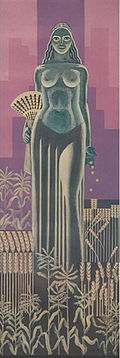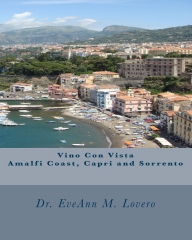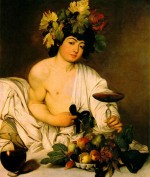I love the Chicago Loop. When I was a little girl, my Dad and I would take the “El” downtown and go to Trader Vic‘s in the historic Palmer House Hilton hotel on East Monroe Street. I loved the skyscrapers and the historic buildings like the 17-story Boston Store Building at 22 West Madison Street, the Mentor Building and the Palmer House.

Chicago’s Palmer House Lobby
This was the perfect setting for the Superman Movie that was released in 2013. In September, filming for “Man of Steel” the new Superman movie took place in Chicago’s Loop. The film stars Henry Cavill as mild-mannered journalist Clark Kent who is transformed into Superman. Kevin Costner plays the superhero’s father and Diane Lane will portray his mom. The film is expected to feature the Loop’s Chicago Board of Trade Building and the Willis Tower.

The facade of the Chicago Board of Trade Building located at 141 W. Jackson will be used as “The Daily Planet” in the movie. This 1930’s building designed by Holabird and Root is known for its art deco architecture, sculptures and large-scale stone carving. It has large trading floors. A three-story art deco statue of Ceres, goddess of agriculture caps the building.
The Chicago Board of Trade Building is a skyscraper located in Chicago, Illinois, United States. It stands at 141 W. Jackson Boulevard at the foot of the LaSalle Street canyon, in the Loop community area in Cook County. Built in 1930 and first designated a Chicago Landmark on May 4, 1977, the building was listed as a National Historic Landmark on June 2, 1978.
It was added to the National Register of Historic Places on June 16, 1978. Originally built for the Chicago Board of Trade (CBOT), it is now the primary trading venue for the derivatives exchange, the CME Group, formed in 2007 by the merger of the CBOT and the Chicago Mercantile Exchange. In 2012, the CME Group sold the CBOT Building to a consortium of real estate investors, including GlenStar Properties LLC and USAA Real Estate Company.
The 141 W. Jackson address hosted the former tallest building in Chicago designed by William W. Boyington before the current Holabird & Root structure, which held the same title for over 35 years until being surpassed in 1965 by the Richard J. Daley Center. The current structure is known for its art deco architecture, sculptures and large-scale stone carving, as well as large trading floors. An aluminum, three-story art deco statue of Ceres, goddess of agriculture (particularly grain), caps the building. The building is a popular sightseeing attraction and location for shooting movies, and its owners and management have won awards for efforts to preserve the building and for office management.
Architecture
In 1925, the Chicago Board of Trade commissioned Holabird & Root to design the current building. The general contractors Hegeman & Harris built it for $11.3 million, although the reported twenty-year mortgage value was $12 million ($12 million in 1925 equates to about 160 million in 2017 dollars). Clad in gray Indiana limestone, topped with a copper pyramid roof, and standing on a site running 174 ft east–west on Jackson Boulevard and 240 ft (73 m) north–south on LaSalle Street, the 605 ft tall art deco-styled building opened on June 9, 1930. It serves as the southern border for the skyscrapers hugging LaSalle Street and is taller than surrounding structures for several blocks. The Chicago Board of Trade has operated continuously on its fourth floor since the 1930 opening, dedicating 19,000 square feet to what was then the world’s largest trading floor.
The advent of steel frame structural systems allowed completely vertical construction; but as with many skyscrapers of the era, the exterior was designed with multiple setbacks at increasing heights, which served to allow additional light into the ever-deepening concrete valleys in urban cores. At night, the setbacks are upwardly lit by floodlights, further emphasizing the structure’s vertical elements. The night illumination design was a common contemporary Chicago architectural theme, seen also in the Wrigley Building, the Jewelers Building, the Palmolive Building, the LaSalle-Wacker Building, and the Tribune Tower.
Interior decoration includes polished surfaces throughout, the use of black and white marble, prominent vertical hallway trim, and an open three-story lobby which at the time of opening housed the world’s largest light fixture. Though One LaSalle Street had five more floors, the CBOT building was the first in Chicago to exceed a height of 600 ft . After surpassing the Chicago Temple Building, it was the tallest in Chicago until the Daley Center was completed in 1965. Known for its work on the Brooklyn Bridge, the family-operated factory of John A. Roebling supplied all of the cables used in the building’s 23 Otis elevators. Beneath the main trading floor over 2,700 miles (4,300 km) of telephone and telegraph wires were once hidden. No less than 150,000 miles of wires (considered possibly the most direct long-distance wire from any building) once ran from the room.
The building was commissioned for the Chicago Board of Trade, its first tenant was the Quaker Oats Company, which moved in on May 1, 1930.
Artwork
John W. Norton‘s three-story mural of Ceres.
Sculptural work by Alvin Meyer, the one-time head of Holabird & Root’s sculpture department, is prominent on the building’s façade, and represents the trading activities within. On each side of the 13 ft diameter clock facing LaSalle Street are hooded figures, a Babylonian holding grain and a Native American holding corn.
Similar figures are repeated at the uppermost corners of the central tower, just below the sloping roof. About 30 ft above street level, representations of bulls protrude directly from the limestone cladding on the building’s north side and to a lesser degree on the east side, a reference to a bull market.
The central structure is capped by a 6,500 pound, 31 ft tall aluminum statue by sculptor John H. Storrs of the Roman goddess of grain, Ceres, holding a sheaf of wheat in the left hand and a bag of corn in the right hand, as a nod to the exchange’s heritage as a commodities market. This statue was assembled from 40 pieces.
Commissioned in 1930 but removed from the agricultural trading room in 1973 and stored until 1982, John W. Norton‘s three-story mural of Ceres shown bare-breasted in a field of grain underwent extensive restoration in Spring Grove, Illinois by Louis Pomerantz before being displayed in the atrium of the 1980s addition.

The Daily Planet is a fictional broadsheet newspaper that is Clark Kent’s employer in the tales of Superman. The building’s original features were based upon the AT&T Huron Road Building in Cleveland, Ohio. The Daily Planet is based in Metropolis and employs Clark Kent, Lois Lane, and Jimmy Olsen. The Editor In Chief is Perry White.
Sometimes, my Dad and I would dine at the Berghoff Restaurant for lunch or the Walnut Room in Marshall Fields. I loved strolling down State Street at Christmas to see the lavishly decorated windows.
This area is brimming with incredible architecture, steel skyscrapers and a wealth of outdoor sculpture.
Here’s my “I Love Chicago” Loop Video http://youtu.be/vLWpv39Dm7U . I have dedicated this video to my fond memories of the time I spent downtown with my Father.
The Loop collection of impressive collection on publilc art and outdoor sculptures.You can find work by famous artists and sculptors including: Pablo Picasso, Joan Miró, Henry Moore, Marc Chagall, Alexander Calder, and Jean Dubuffet.
Chicago’s cultural heavyweights include the following Chicago Gems: Cultural Center, such as the Art Institute of Chicago, the Goodman Theatre, the Chicago Theatre, the Lyric Opera at the Civic Opera House building, and the Chicago Symphony Orchestra, are also in this area, as is the historic Palmer House Hilton hotel, found on East Monroe Street.
Dr. EveAnn Lovero writes Travel Guides @ www.vino-con-vista.com.

Chicago’s Picasso

Chicago’s Picasso
Related articles
- World’s Largest Bratwurst Cooked Up By Chicago Restaurant (VIDEO) (huffingtonpost.com)
- Chicago based German restaurant takes title of world’s longest Bratwurst AKA Hot dog (dont watch if you’re on a diet) (iryanpereira.wordpress.com)
- I love Gioco: An Italian Restaurant in Chicago’s South Loop Neighborhood (vinoconvistablog.me)
- New Saint Peter’s Catholic Church in Chicago’s Loop (vinoconvistablog.me)
- The Italian Village is Chicago’s Oldest Italian Restaurant (vinoconvistablog.me)





















